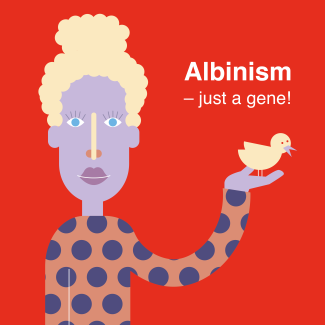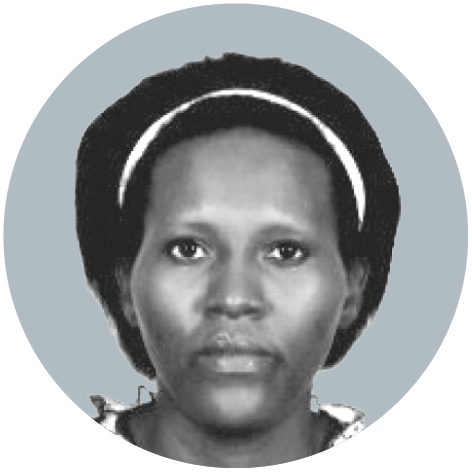Albinism
Just a gene

If both parents carry the defective gene that causes albinism, some of their children will have black skin and others white. In order to understand this, the genetic basis of the different pigmentation must be clarified. Albinism occurs when there has been a small change in one of the twenty genes that either produce or distribute melanin. As a result, the dark pigments in skin, hair and the iris of the eyes are missing. If people do not adequately protect themselves from UV rays, the condition can lead to skin cancer and early death. In most people with albinism in Africa, one particular gene, the OCA2 gene, is affected. In other regions of the world, different genes are responsible.
Albinism is a recessive disorder caused by the interaction of a defective gene from the father and a defective gene from the mother. If two gene carriers have a child together, there is a 25 % chance in every pregnancy that the child will have albinism as a result of inheriting two defective genes. There is a 25 % chance that the child will be phenotypically and genetically healthy and a 50 % chance that the child will be phenotypically healthy, but a carrier of the defective gene. This and many other basics of genetic inheritance have been summarised in the new book „Albinism – just a gene!“, which was created for African schoolchildren and adolescents. It can be downloaded online free of charge. The text explains in simple language the foundations of various pigmentations and of genetics in general. An exhibition on the topic of albinism, with text and illustrations from the book, will also take place this year in the Cultural & Museum Centre Karonga in Malawi.
Book
„Albinism – just a gene“, illustrated by Viola Kup. Available for free in over 20 languages at:
www.albinism-justagene.com.
Gudrun A. Rappold is a professor emerita and former chair of the department of human molecular genetics in Heidelberg University Medical School.
gudrun.rappold@med.uni-heidelberg.de















